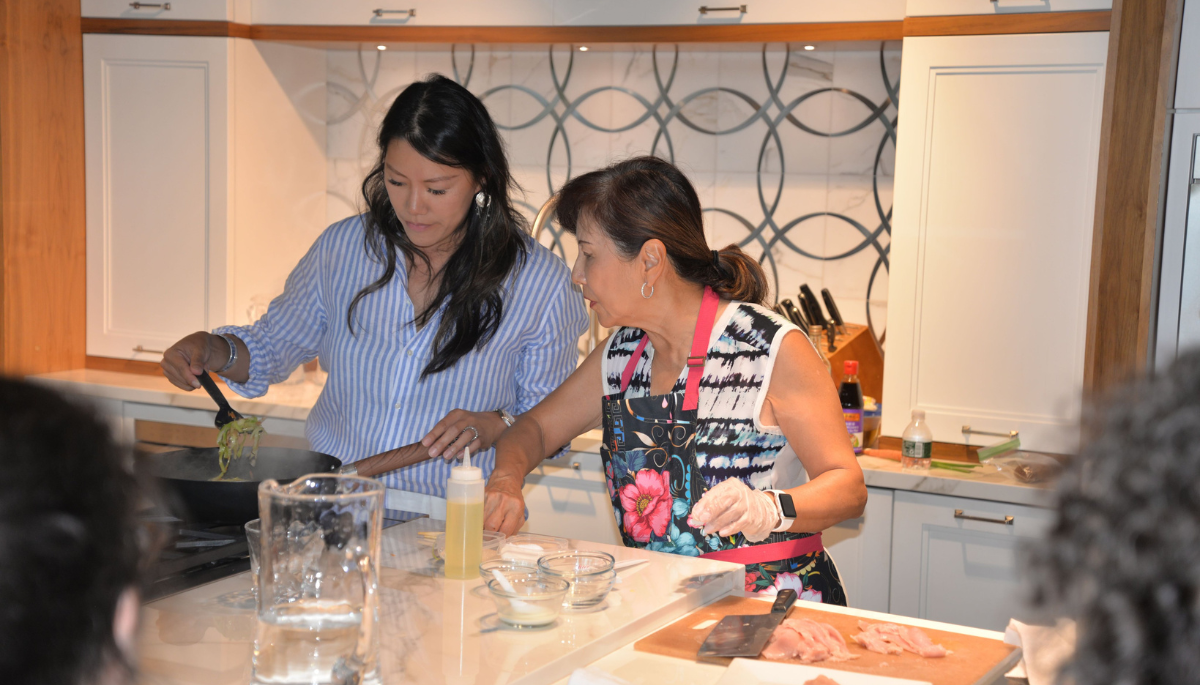What if the best market strategy wasn’t found in analyzing quarterly reports, but in mastering the perfect pleat of a dumpling? That is the journey of Nadia Spellman Dumpling Daughter, who traded the relentless pace of investment banking for the steam and sizzle of the food world, transforming nostalgic family recipes into a $4.5 million national brand: Dumpling Daughter.
The Calculated Leap of Passion
For many, leaving a career in finance which started for Nadia Spellman Dumpling Daughter as an investment banking analyst earning $55,000 plus a bonus around 2004 seems like a risky emotional decision. But her pivot was not reckless; it was a highly calculated move rooted in family wisdom.
Nadia Spellman Dumpling Daughter viewed her time in finance as a crucial, foundational prerequisite, noting that her father had advised her to gain those business skills first, believing the rigor would enable her to “do anything” later. Yet, even as she delved into financial analysis, her real passion was consuming her attention, leading her to spend time researching and cooking food every day. This was her own personal research and development (R&D) project, seeking to identify what was missing in the food world.
By 2008, having identified a clear market need for accessible, authentic Chinese dumplings, Nadia Spellman Dumpling Daughter stepped out of finance. She transitioned into hands-on operations, working for her mother at her successful restaurant to learn the mechanical realities of the business.
Rejecting Lobster for Linearity
Nadia Spellman Dumpling Daughter’s culinary heritage is formidable. Her parents owned Sally Ling’s, which stood as Boston’s most renowned 5-star Chinese restaurant during the 1980s. Despite this high-end pedigree, Spellman’s motivation came not from the luxury cuisine, but from the simple, emotional comfort of home. The happiest memories of her childhood were spent around the table, particularly on Sundays, wrapping dumplings with her mother and grandmother.

This emotional foundation translated into a decisive operational strategy. When she launched Dumpling Daughter in 2014 , she applied a critical analytical filter to her vision. Recognizing the low profit margins and high operational complexity of the fine dining model, her father urged her to find a “smarter way”. The solution was standardization. Instead of offering hundreds of complex menu items, Spellman chose to focus on doing just a few things extremely well specifically dumplings and buns to simplify logistics and maximize margins.
This analytical discipline, borrowed straight from finance, allowed her to create a “copy paste” model built for replication, turning an emotional family asset into a highly scalable, financially viable product line.
The $4.5 Million CPG Flywheel
The true test of scalability came during the COVID-19 pandemic, which became a turning point by accelerating the company’s expansion into the lucrative Consumer Packaged Goods (CPG) sector. This shift successfully transformed localized restaurant success into national accessibility.
Today, Nadia Spellman Dumpling Daughter generates $4.5 million in annual revenue. The frozen foods, including dumplings, bao buns, and the Signature Spicy Sweet Soy sauce, are now distributed through over 1,200 markets, available nationwide on Amazon Prime and through major retailers like Whole Foods Market.
Nadia Spellman Dumpling Daughter created an ingenious business flywheel: the quick-service restaurant locations act as experiential marketing hubs and test kitchens, driving brand awareness and loyalty directly into the high-margin, highly scalable frozen food aisle. This strategy bypassed the geographical constraints and high costs of traditional dining by utilizing industrial co-packers and established nationwide logistics, democratizing the family’s “heirloom recipes”.
Authenticity as the Ultimate Asset
The brand’s enduring strength is not just its efficient supply chain but its unwavering commitment to its story. Nadia Spellman Dumpling Daughter has effectively weaponized nostalgia. Competitors can match ingredients, but they cannot replicate the authentic heritage of Sally Ling’s or the deeply personal story of the daughter carrying on her grandmother’s tradition.
This narrative is cemented through brand extensions, notably the 2022 release of The Dumpling Daughter Cookbook, which Nadia co-authored with her mother, and which Forbes recognized as a “top coolest cookbook”. This publication serves not merely as a revenue source, but as a physical anchor for the brand’s authenticity. By maintaining high visibility as the face of the brand and sharing her story, Nadia ensures that Dumpling Daughter is sold not just as frozen food, but as a shared piece of cultural experience.
Nadia Spellman Dumpling Daughter‘s journey proves that the most valuable investment one can make is in an idea defined by heartfelt authenticity, provided that idea is packaged with the rigorous, analytical discipline learned on Wall Street. Her success is a masterclass in applying high-level financial strategy to the deepest emotional truths of food.